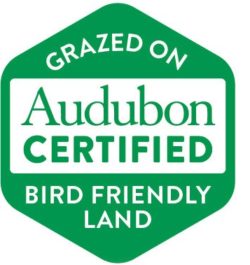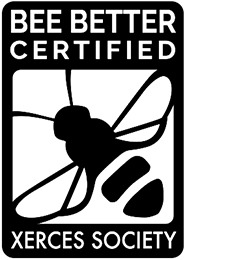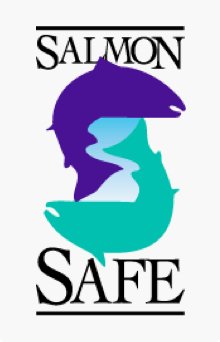Food Labels That Protect The Birds and the Bees (and the Fish)
Since the USDA first started certifying organic food and stamping it with its now-familiar green and white label back in 2002, conversations about what farming practices are healthy and sustainable for the planet have expanded. With that expanded conversation, about the need for increased habitat management and environmental stewardship, have come a slew of additional labels and certifications. They tout a wide range of eco-benefits to consumers looking to support producers who in turn support birds, bugs, and carbon-storing soil with their farming practices.
Most of these labels are focused on what Andrew Gunther, executive director of A Greener World, which offers several certifications, calls “singular, linear issues.” This is a helpful marketing tactic, he says — after all, a label can only be successful if it can ratchet up its scale — because it targets consumers who have a strong connection to what the labels are offering. The Audubon Society, for example, whose mission is to protect birds and their habitats, gets easy buy-in among its 1.7 million members for products stamped with its bird-friendly label.
But as Marshall Johnson, the organization’s Conservation Ranching Program vice president, points out, “Where birds thrive, people prosper because birds need clean air, water, and land and so do we.” The same can be said for the insects that feed those birds and pollinate our crops, and diverse collections of trees that provide habitat for numerous species and bolster soil health. A common formula for creating robust ecosystems gives these labels a power beyond what’s immediately obvious.

A Beef Label For the Birds
Audubon now offers a label that certifies grassfed beef — to date, covering almost 100 cattle ranches practicing regenerative grazing across 2 million acres in 12 states, as a means to conserve and restore threatened grasslands. Although Audubon’s target concern is the birds experiencing enormous declines in these habitats, its standards are also meant to build soil organic matter and provide much needed habitat for all manner of species — thereby supporting whole ecosystems.
One-third of the ranches in the program, which is gearing up to expand even further, are USDA Organic certified; but Audubon’s third-party-certified standards either overlap with Organic’s environmental stewardship standards — i.e., no neonicotinoids, antibiotics, or sub-therapeutic feeding — or go one better by significantly boosting the number of native plants on rangelands. Their standards for wetlands and streams protect piping plovers in the Dakotas, for example; others for shortgrass prairie protect lesser prairie chickens in the Great Plains.
Johnson is sure the program has beyond-birder consumer appeal, which is borne out by the fact that in just three years the program has grown to its current size from an initial six participating ranches. at markets in Colorado, Montana, and other grassland states. Blue Nest Beef sells online nationwide, while Hay Mama Beef sells online to consumers in California.

Bird-Friendly Coffee
Audubon is not the only bird-protecting organization that’s sees the value in food label certification. In fact, the Smithsonian Institution’s Migratory Bird Center has been certifying Bird Friendly Coffee since 1999.
“We look at what we offer as Organic-plus for habitat,” for birds facing massive declines around the world, says program manager Justine Bowe.
While Organic bans harmful agrochemical inputs, Smithsonian standards mandate diversities of (native) trees and shrubs to help protect species like Baltimore orioles and Indigo buntings that overwinter in Latin American coffee plantations. Over 4,600 coffee producers in 12 (mostly Latin American) countries are certified—resulting in about 22 million pounds of shade- and tree-preserving land for our feathered friends.
As Audubon reports, “[F]arms that look like forests, often called ‘agroforests’ for their mix of coffee shrubs and stands of trees, typically house higher bird diversity than monoculture farms that have little or no natural canopy cover.” Tree diversity in forests also supports higher diversity of all sorts of species, and can have positive effects on carbon storage, according to research published in the journal Functional Ecology.
You can find the Bird Friendly label marking some Allegro beans at Whole Foods, stamped on the Wegman’s Guatemalan Organic brand, and on bags of Peet’s Yosemite Dos Sierras coffee. The Smithsonian only has a limited number of certifiers who assess coffee plantations in its program; but it also works to expand the reach of its standards, by encouraging large national and international coffee chains to shift their own internal sustainability efforts towards more bird-friendly practices. “We would love to have an ongoing conversation with [corporations], so we can raise the bar on the whole industry,” says Bowe.

Bird-Friendly Maple Syrup
Meanwhile, Vermont Audubon has been working with maple syrup makers in-state to create bird-friendly sugarbushes (that is, forests that are used in maple syrup production, which have varying percentages of maples). Fifty-one producers have so far signed on to improve their hardwood forests for the benefit of birds, according to the organization’s conservation biologist Steve Hagenbuch. In return, they receive a bird-friendly maple label. It’s not an official certification, or third-party verified….yet, but it is a label you can find on products.
Standards require letting lie four downed logs and two downed trees — or snags—per acre to provide habitat and nesting areas for birds, as well as habitat for the insects they eat; and making sure bird-friendly, maple-complement trees like birches and beeches make up at least 25 percent of a sugarbush. These supplement USDA Organic requirements regarding the number of taps a tree can safely withstand and forest thinning practices.
Sure, it’s hyper-niche in every way; it mainly appeals to avianists, who purchase syrup directly from their neighbor/producers, or from large producer Runamok Maple at national birding supply chain Wild Birds Unlimited. But Vermont’s hardwood forests support many key migratory bird species. And they also sequester and store a lot of carbon, which has wide-ranging benefits. Additionally, state Audubons in New York and Massachusetts are talking with Hagenbuch about implementing their own maple labeling programs, which will increase the reach of these standards.

Protecting Pollinators With a Certified Label
On first consideration, the Bee Better certification from the Xerces Society seems pretty niche, too, designed as it is to protect bees above all. But like Vermont Audubon’s maple program, it has a bigger impact than is immediately apparent.
For starters, says program coordinator Cameron Newell, it provides a “gateway” for large producers — so far representing 20,000 farm acres across the country—to grow food in a way that benefits insects and soil without converting to USDA Organic, or while waiting out the mandatory three-year transition period.
It “takes a stronger stance against the pesticides that have been shown to be toxic to pollinators,” Newell says, and also pushes growers to cut down on chemicals by using integrated pest management techniques. Standards — which are third-party verified — also mandate putting in a total of 5 percent combined permanent and temporary pollinator habitat.
There are 19 farms that use the Bee Better label so far. You’ll find it on blueberries from Oregon, four Häagen-Dazs flavors that contain almonds from Bee Better certified orchards— Vanilla Swiss Almond, Honey Salted Caramel, Rocky Road, and Vanilla Milk Chocolate Almond Bars — grains and pulses from Montana, and wine grapes from the West Coast. Expanding its influence, Xerces has also been in conversation with Oregon Tilth about how their bee standards might be incorporated into the third-party verifier’s own organic standards.

A Wine Certification That Protects Birds, Bees and…Salmon?
In the Pacific Northwest, an organization called LIVE third-party certifies 400 vineyards and wineries, with a focus in its standards on cover cropping and no-tillage planting methods. One clear result: Improved carbon storage in the soil, according to outreach director Brighid O’Keane.
This is a highly regionalized program, covering wines produced in Washington, Oregon, and Idaho and sold only through shops in those states; you can find a list of places to purchase them here, if you’re a local. But again, LIVE strives in several ways to increase its impact. For example, it requires that 5 percent of a property be devoted to “eco-compensation areas” that are either left wild or planted to support a biodiversity of bees, butterflies, and other species; and as you may have suspected if you’ve read this far, they also have carbon storage benefits.
LIVE also partners with Salmon Safe, mandating the use of their standards among their wine grape growers, to keep hazardous agricultural chemicals out of watersheds and aquatic ecosystems. That’s why a LIVE certified vineyard is also automatically Salmon Safe certified, as are any other crops a vineyard might grow on its property, like lavender or tree fruit.
Support the Labels
Of course, the success of these labels depends on consumer buy-in. If you’re interested in any of the species and habitats and the regional soil structure these labels seek to bolster, support their products with your dollars. To find other food labels you may be interested in, visit the Food Label Guide.
Get the latest food news, from FoodPrint.
By subscribing to communications from FoodPrint, you are agreeing to receive emails from us. We promise not to email you too often or sell your information.
More Reading
The USDA updated label guidelines to increase transparency — is it enough?
September 12, 2024
Cooking oils and sustainability
July 26, 2024
Fair trade certifications impede worker organizing, according to new report
December 27, 2023
The basics of coffee labeling
October 18, 2023
The Foodprint of Tea
April 4, 2023
The Basics of Fair Trade Labels
February 13, 2023
How Hormel Exploited Confusion Over the Natural Label
January 23, 2023
Grocery Supply Chains: Understanding Why Eggs Cost What They Cost
January 3, 2023
Making Sense of Regenerative Labels
July 6, 2022
5 Things You Should Know Before Buying A Chocolate Bar
October 26, 2021
